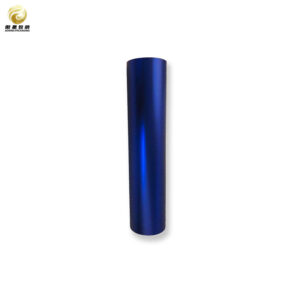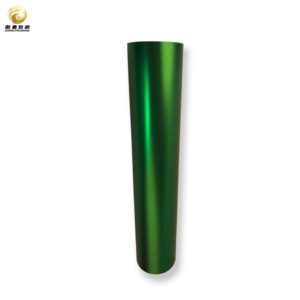3D PET Film
| Product | PET Holographic Film |
| Material | PET + color+ aluminum layer / PET + aluminum + color layer |
| Thickness | 12~188um |
| Color Option | Red,Blue,Purple,Green,Gold,Yellow,Rose,Rainbow,etc. |
| Width & Length | Width:500~1800mm Length:Customized |
Detailed Descriptions
Product Description: 3D PET Film
Introducing our premium 3D PET Film, a cutting-edge solution designed to elevate your projects with unparalleled clarity, durability, and versatility. Engineered from high-quality polyethylene terephthalate (PET), this film is specifically crafted to meet the demands of various applications across multiple industries, including packaging, electronics, automotive, and graphic arts.
Key Features:
1. Exceptional Clarity and Gloss: Our 3D PET Film boasts a crystal-clear surface that enhances visual appeal while providing a glossy finish. This feature is particularly beneficial for applications requiring vibrant colors and sharp images, making it ideal for packaging designs and promotional materials.
2. Superior Durability: Built to withstand the rigors of everyday use, this film exhibits remarkable resistance to tearing, puncturing, and environmental factors such as moisture and UV light. Its robust nature ensures that your products maintain their integrity and aesthetic appeal over time.
3. Lightweight Yet Strong: Despite its lightweight composition, our 3D PET Film offers impressive tensile strength. This characteristic allows for easy handling and application without compromising on performance or reliability.
4. Versatile Applications: The adaptability of our 3D PET Film makes it suitable for a wide range of uses. Whether you are creating eye-catching labels, protective covers for electronic devices, or innovative packaging solutions, this film can be tailored to meet your specific requirements.
5. Eco-Friendly Option: Committed to sustainability, our 3D PET Film is recyclable and produced using environmentally responsible practices. By choosing this product, you are not only enhancing your projects but also contributing to a greener planet.
6. Easy Processing: Designed for seamless integration into various manufacturing processes, our 3D PET Film can be easily printed on, laminated, or coated. Its compatibility with different printing technologies ensures that you can achieve the desired results without hassle.
7. Customizable Thickness Options: Available in a range of thicknesses to suit different applications, our 3D PET Film allows you to select the perfect balance between flexibility and rigidity based on your project needs.
Applications:
– Packaging Solutions: Ideal for food packaging, retail displays, and promotional items where visual impact is crucial. – Graphic Arts: Perfect for posters, banners, and other printed materials that require high-resolution imagery. – Electronics Protection: Used as a protective layer for screens and devices to prevent scratches and damage. – Automotive Industry: Suitable for interior trims and decorative elements that require both aesthetic appeal and durability.
Our 3D PET Film is ideal for a wide range of uses, including packaging, labeling, and decorative applications. Its unique three-dimensional effect enhances visual appeal while maintaining durability and flexibility. As a trusted manufacturer, we ensure that our film is not only aesthetically pleasing but also functional, providing excellent resistance to moisture, chemicals, and UV light.
For businesses looking to bulk buy or engage in wholesale purchasing, we offer competitive bulk prices that make it easy to stock up on this versatile material. Our commitment to quality and customer satisfaction has established us as a reliable partner for companies seeking OEM solutions tailored to their specific requirements.
As a prominent producer in the industry, we understand the importance of timely delivery and consistent supply. Our efficient logistics network ensures that your orders are fulfilled promptly, whether you are sourcing for local projects or exporting internationally.
Choose our 3D PET Film for your next project and experience the difference that comes from working with a reputable factory known for its excellence in production. Contact us today to learn more about our offerings and how we can support your business needs with our high-quality products at competitive prices.








